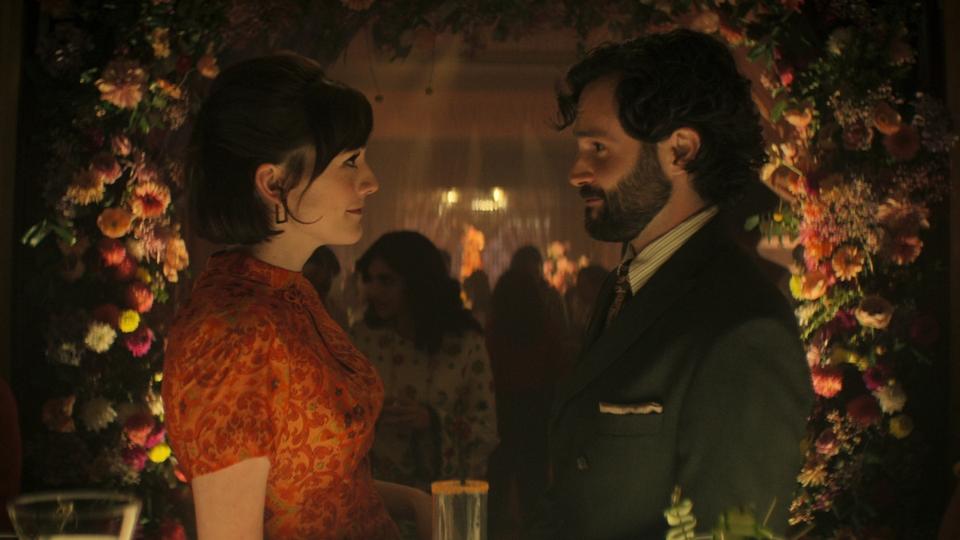You was never just a show about obsession—it was a show about misdirection. And as it closes out its final season this week, it leaves behind more than a trail of bodies and betrayals. It leaves behind something quieter, and more unsettling: in You, food is never just food. It’s a lure. A mask. A red herring.
From the bookstore banter of Season 1 to the socialite dinner parties of its final act, You has consistently weaponized the rituals of eating to create intimacy—only to rip it away. The show doesn’t just shock with violence. It builds tension by first feeding us comfort, then turning the table.
The Roast Wasn’t Just a Roast
One of You’s most quietly devastating sequences comes in Season 2. Love is in the kitchen, calmly unpacking groceries and preparing a rack of lamb. The lighting is soft. The sound design, gentle. We see her hands working with care—rosemary, oil, the measured tempo of domestic ritual.
But the scene is intercut with Joe.
He’s disposing of a body.
Two acts of preparation, side by side. One person plating care. The other erasing evidence. What’s chilling isn’t just the violence—it’s how familiar it all feels. These aren’t horror cues. These are comfort cues. And that’s the point.
You isn’t just using food as a prop. It’s using it as a portal. A way to draw us into something that looks like safety but isn’t.That roast isn’t just dinner—it’s denial. A performance of intimacy masking the rot beneath.
Comfort as Camouflage
This is the emotional sleight of hand the series returns to, again and again.
From Love’s bakery to Dottie’s disastrous “gordatas” dinner to the soft-lit café scenes with Bronte in the final season, You understands the language of care. It borrows from food shows and rom-coms, from brunch menus and Instagram meal-prep aesthetics. The result is a world that feels digestible—until it isn’t.
These scenes lull us. They mirror how, in real life, food rituals can act as emotional placeholders. We bake when we don’t know what else to do. We meal prep to feel in control. Sometimes we perform wellness when what we’re really craving is stability.
Psychologists describe this kind of behavior as emotional substitution—a way we use symbolic action to stand in for unspoken needs. And research has shown that food, in particular, plays this role across cultures. It becomes a stand-in for love, safety, connection, or control—rituals that feel grounding even when everything else is unraveling.
We’ve cooked for people we were trying to keep. We’ve served meals to avoid saying what we couldn’t name. Sometimes the food is good. Sometimes it’s the only thing holding things together.
The comfort is real—but so is the misdirection.
The Bigger Betrayal
We’ve seen this theme explored elsewhere—The Menu, Fresh, Midsommar—but You operates differently. It doesn’t wear the horror on its sleeve. It seduces first. The food in You isn’t grotesque or symbolic. It’s gorgeous. Familiar. Safe.
Which is why the betrayal hits harder.
A roast in the oven. A cupcake on a counter. A meat grinder in the corner.
Or even something as simple—and invisible—as peanut oil in a drink.
In one of the show’s earliest seasons, Joe uses food’s unspoken trust against someone directly, slipping peanut oil into a drink to trigger a fatal allergic reaction. There’s no chase, no overt violence. Just the slow, horrifying realization that something meant to be safe—sharing a drink—isn’t safe at all.
It’s not what’s happening on screen that unsettles us—it’s what’s being staged. The mise en scène of menace. The illusion of intimacy. The idea that the thing we trust to keep us nourished might also be hiding the harm.
What We’re Really Being Fed
In Eating in the Light of the Moon, Dr. Anita Johnston describes food as a “red herring”—not the problem itself, but a distraction from the deeper emotional current. In You, this metaphor becomes visual. Literal. The food is beautiful. But it’s not the point.
It’s bait.
Whether it’s a romantic meal or a family dinner, a croissant or a catered lunch, the show asks us to notice what isn’t being said. What isn’t being shown. Because in You, the dinner table is never the whole story. It’s the setup.
And sometimes, it’s the crime scene.
The Most Dangerous Place
You doesn’t offer a fix. It doesn’t pretend that noticing the trap means escaping it. But it does make something visible: how easily care can be performed, how deeply comfort can be weaponized.
And that’s not just a television tactic. Cultural theorists have long noted how emotional labor—especially in domestic spaces—can become a kind of performance. Not just what we feel, but what we’re expected to show. The aesthetic of control becomes its own kind of safety net.
Sometimes, recognizing the pattern is the only real control we get.
Because in this world, the most dangerous place isn’t the alley or the basement.
It’s the dining room.
Where danger sits across the table, disguised by candlelight and comfort.

